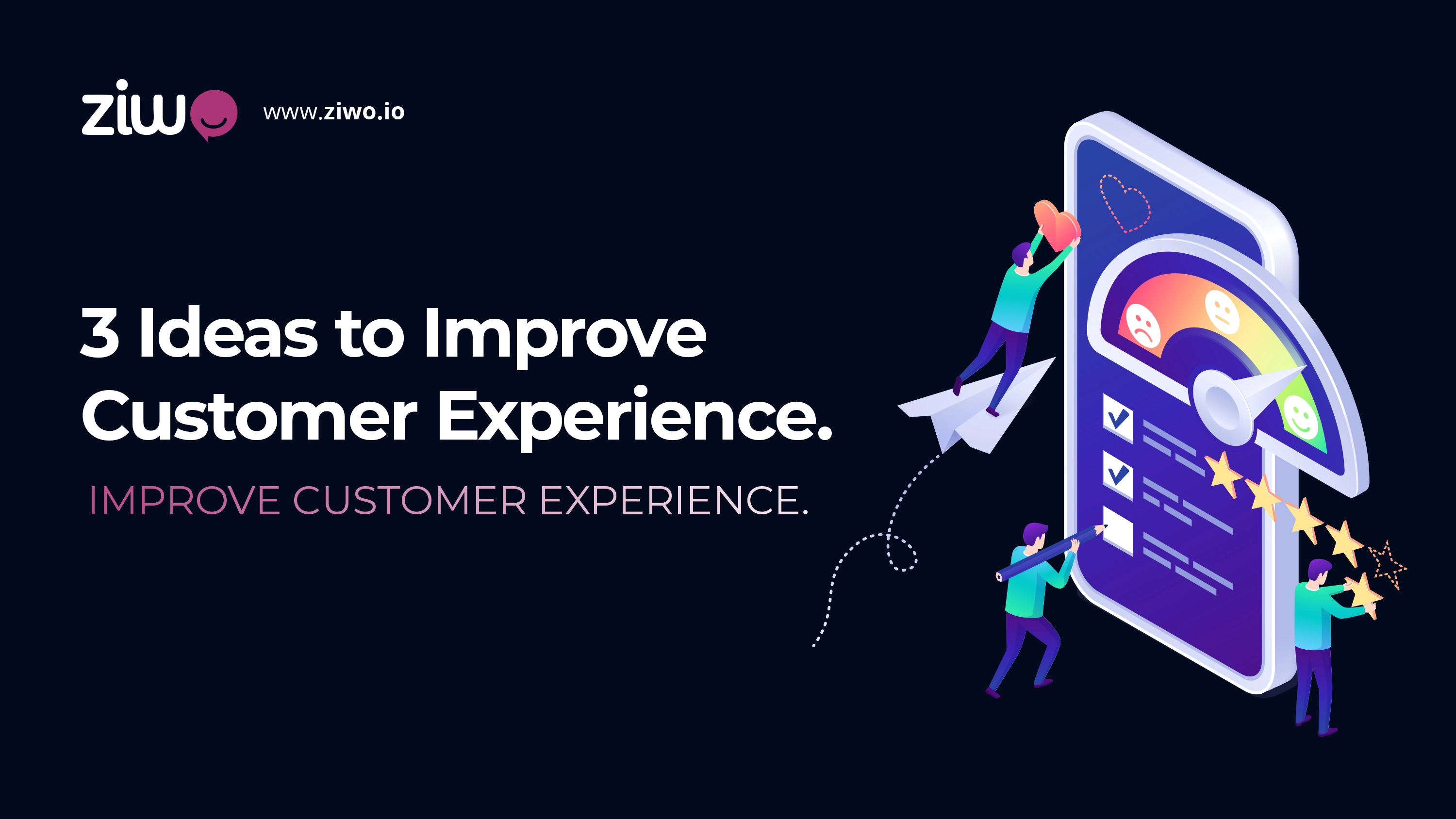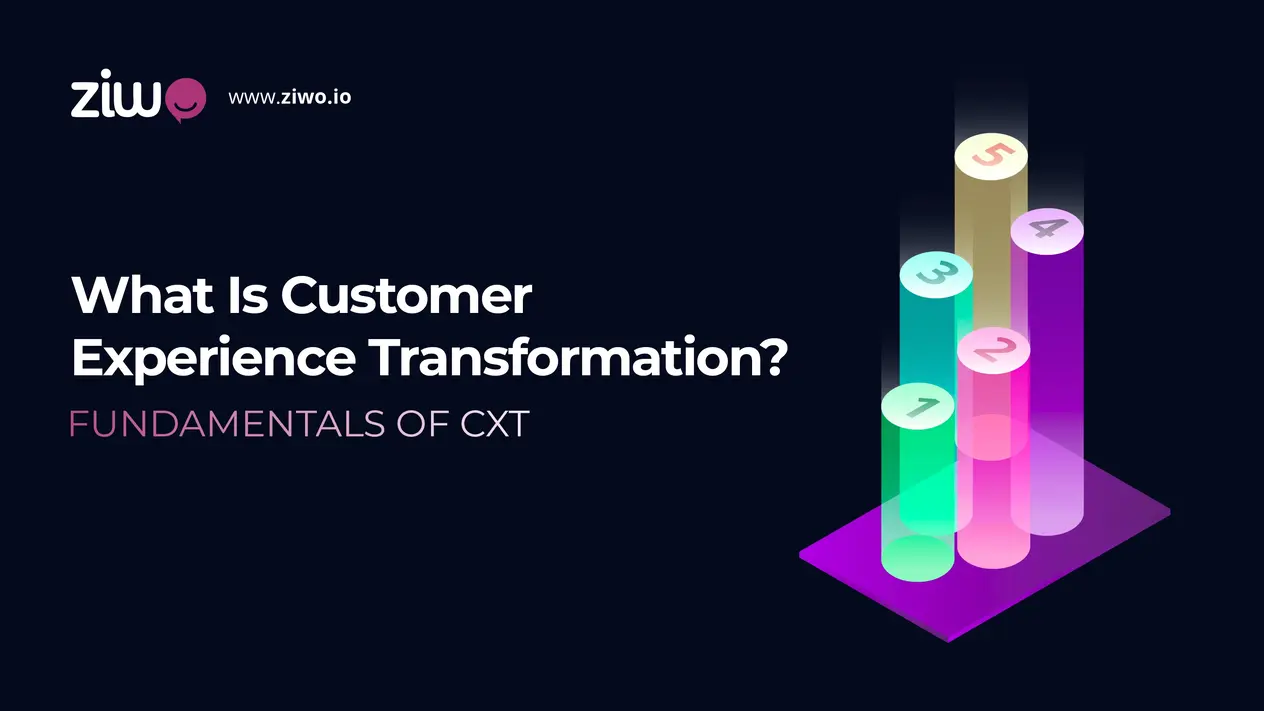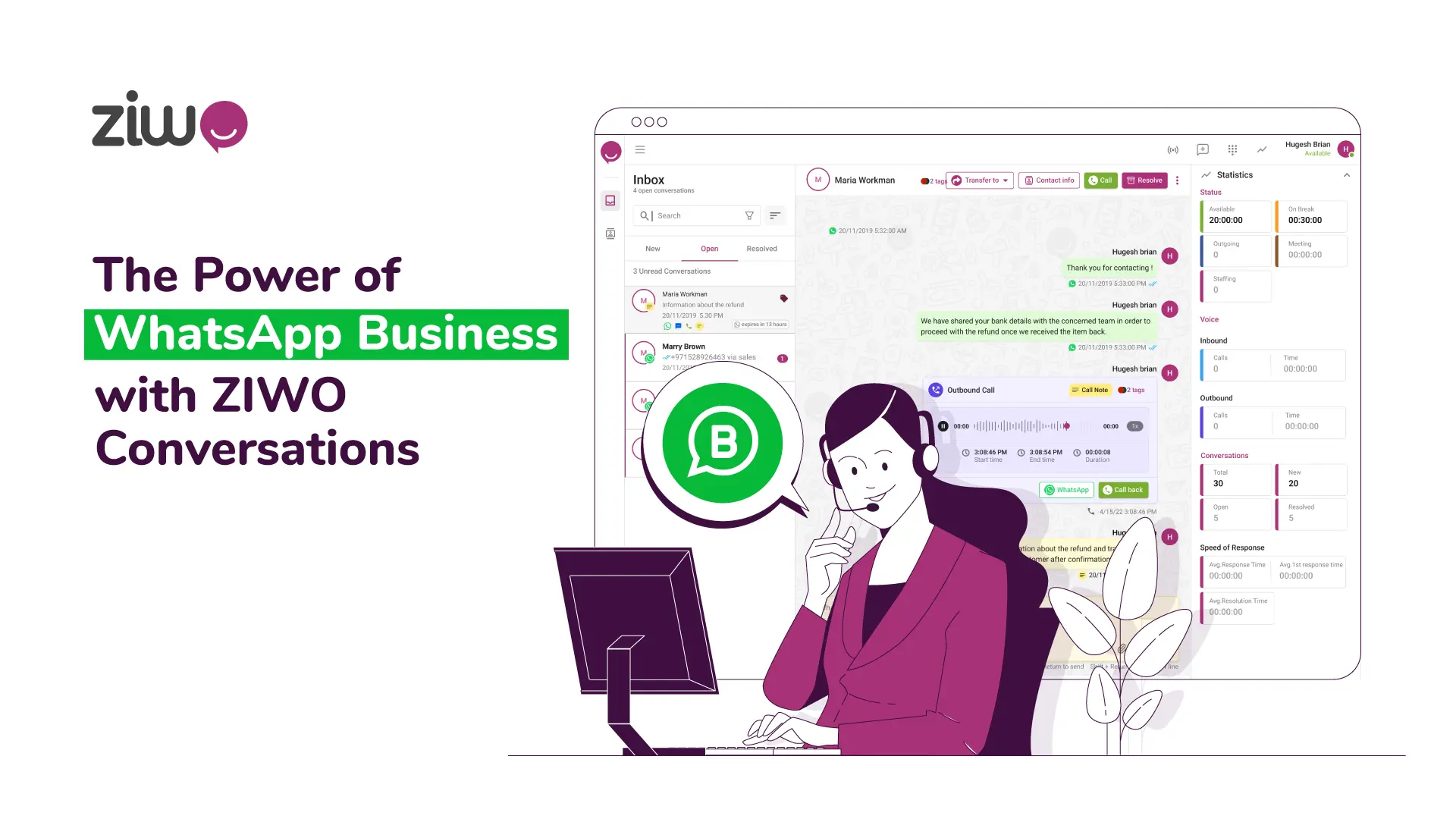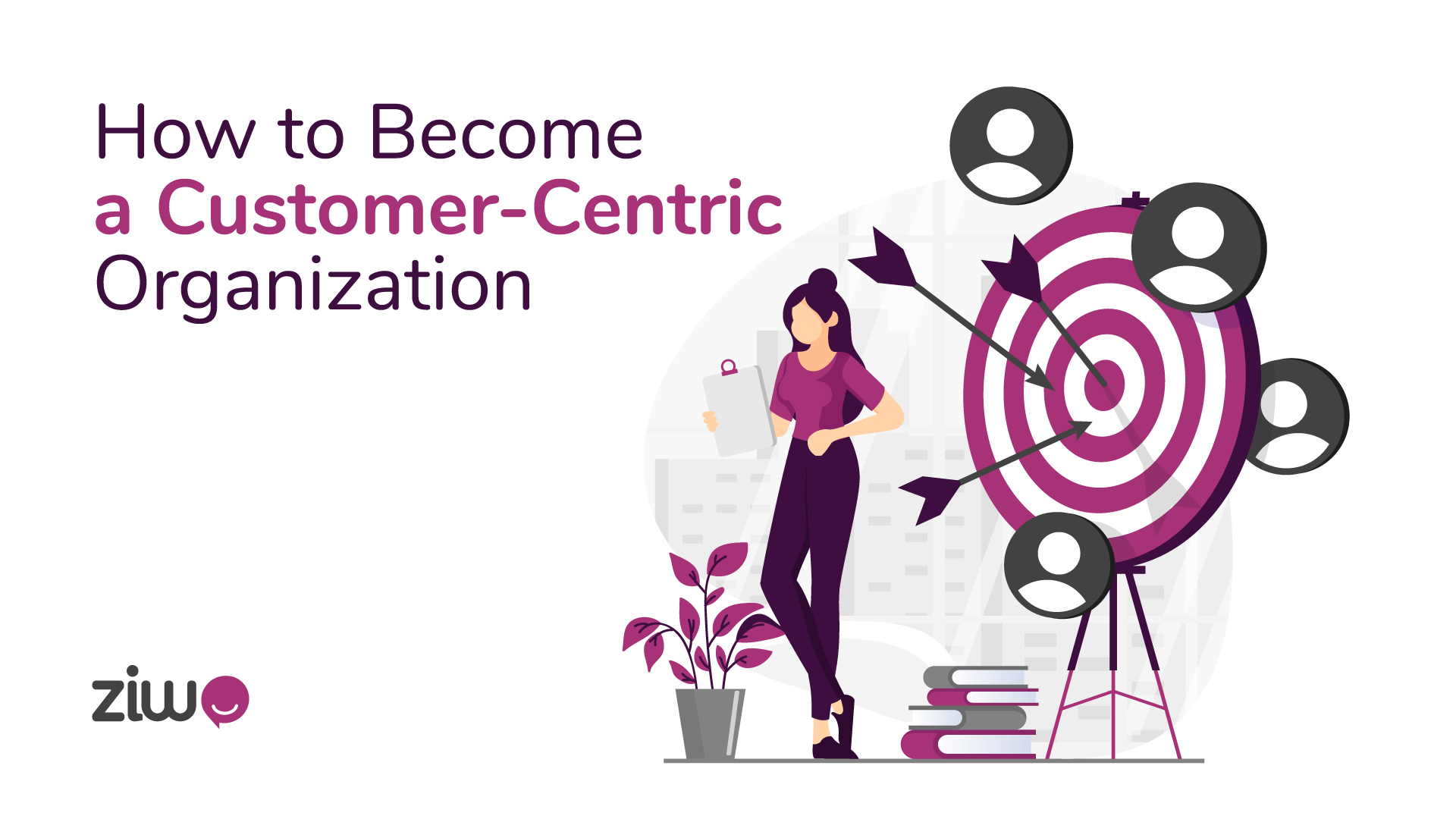
L'approche centrée sur le client consiste à placer vos clients, les personnes qui apportent de la valeur à votre entreprise, au cœur de tout ce que vous faites. Mais il ne s'agit pas seulement d'écouter les clients ; c'est une approche qui doit s'appliquer à toutes les composantes de votre entreprise, et pas seulement aux équipes en contact avec la clientèle, comme le service d'assistance ou les ventes.
Dans un monde où les choix sont si nombreux, il est important d'offrir une expérience exceptionnelle et de ne pas se contenter de répondre aux attentes des clients, mais de les dépasser. Les marques qui s'efforcent de comprendre leurs clients et de donner à leurs employés les moyens d'agir en fonction des commentaires des clients se rendent compte qu'être centré sur le client n'est pas un choix - c'est une nécessité.
Dans ce blog, nous allons explorer ce que signifie une culture centrée sur le client dans votre entreprise et comment vous pouvez y parvenir.
Qu'est-ce qu'une organisation centrée sur le client ?
Une culture centrée sur le consommateur consiste à prêter attention à ce que disent les clients, à comprendre leurs besoins et à utiliser ces informations pour créer des produits et des services que les clients apprécient vraiment et trouvent utiles.
L'objectif principal de toute organisation centrée sur le client est d'établir des relations solides avec les clients, qui les incitent à revenir et à parler à d'autres de leurs expériences positives.
Dans une entreprise réellement axée sur les clients, chaque décision prise est fondée sur ce que les clients ont à dire et sur les avantages qu'ils en retireront. Ces entreprises impliquent activement les clients dans le processus en les encourageant à faire part de leurs commentaires honnêtes. Cela crée un partenariat entre les clients et l'entreprise, ce qui est une grande différence par rapport au fait de simplement écouter ce que les clients ont à dire - il s'agit d'être véritablement centré sur le client.
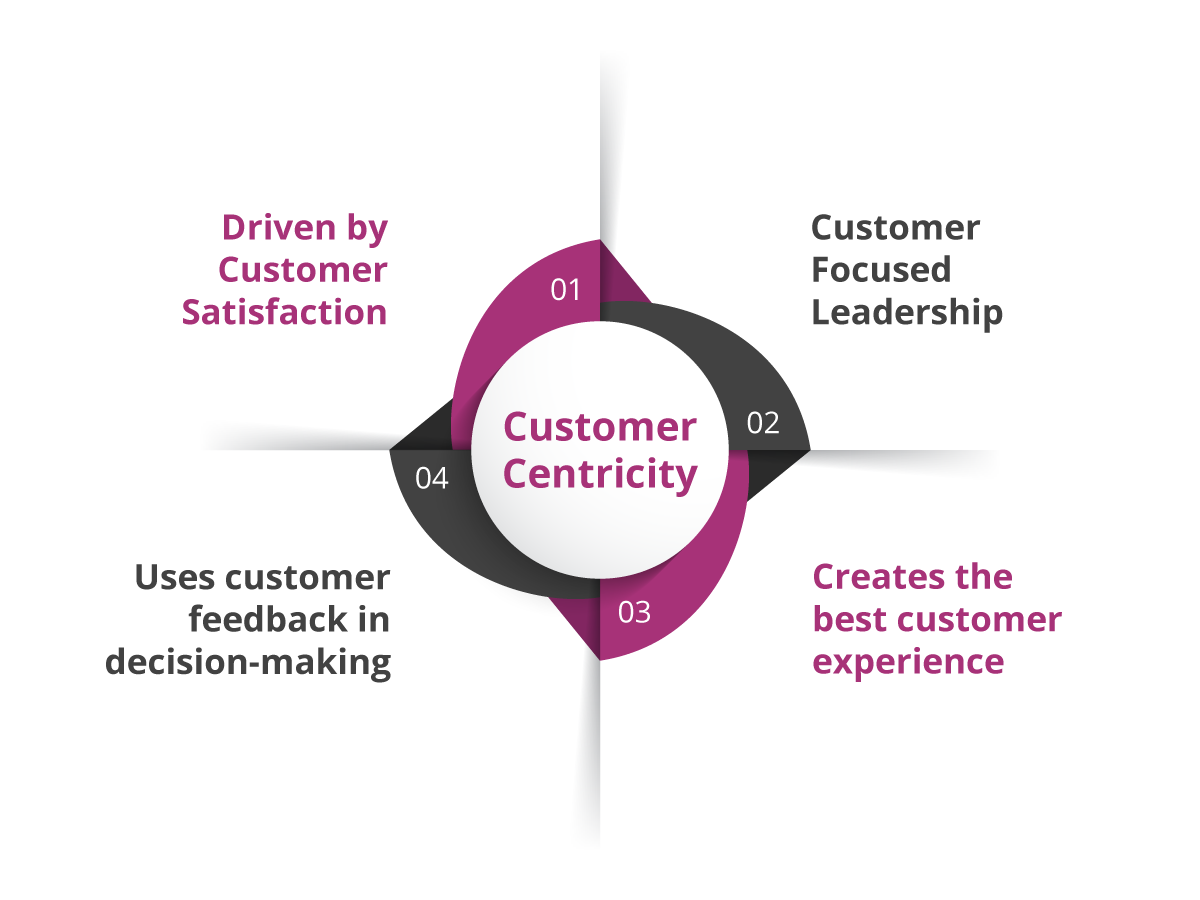
Dans une culture centrée sur le consommateur, le plus important est le client, et non pas de s'en tenir à son plan d'affaires initial. Supposons que votre entreprise commence à recevoir de plus en plus de plaintes. C'est peut-être le signe qu'il est temps d'examiner de plus près la manière dont vous communiquez avec vos clients. Une mesure intelligente pourrait consister à mettre en place un centre de contact Cloud pour recueillir les commentaires à la fin des appels. Vous pourrez ainsi comprendre pourquoi les clients annulent vos services.
Quelles sont les caractéristiques d'une organisation centrée sur le client ?

Dans une organisation centrée sur le client, tous les membres de l'entreprise se concentrent sur un objectif principal : faire en sorte que les clients vivent une expérience extraordinaire. Cette approche consiste à comprendre les besoins des clients, à s'en préoccuper et à toujours trouver des moyens d'améliorer leur expérience.
Décortiquons les facteurs clés :
Un leadership centré sur le consommateur
Les dirigeants de l'entreprise sont comme des guides. Ils fixent la direction à suivre et montrent à chacun l'importance des clients. Ils montrent l'exemple et apprennent aux employés à faire des choix qui rendent les clients heureux.
Coopération au sein de l'organisation
Imaginez que toutes les équipes de votre entreprise sont des pièces de puzzle. Pour que le tableau soit complet, elles doivent s'emboîter les unes dans les autres. Lorsque toutes les équipes travaillent ensemble et partagent des informations, cela permet de résoudre les problèmes plus rapidement et de s'assurer que tout le monde travaille dans le même sens : rendre les clients heureux. L'élimination des barrières entre les équipes permet de trouver de nouvelles et meilleures façons de satisfaire les clients.
Appropriation, obligation de rendre compte et responsabilité
Chaque membre de l'entreprise, quelle que soit l'équipe à laquelle il appartient, doit pouvoir contribuer à résoudre les problèmes des clients. Lorsque chacun prend ses responsabilités, cela signifie qu'il se soucie de rendre les clients heureux. Cela permet également de trouver de nouvelles idées pour améliorer les choses.
Pourquoi est-il important de créer une organisation centrée sur le client ?
Lorsque les clients ne sont pas satisfaits de votre marque, ils la quittent. De nos jours, il est facile pour les gens de passer à une autre marque qu'ils apprécient, et ils n'ont pas peur de le faire. Il est surprenant de constater qu'un client sur trois abandonne une marque qu'il aime après une seule mauvaise expérience.
Mais si vous vous attachez à être centré sur le client, c'est-à-dire à vous préoccuper réellement de ce qu'il veut et de ce dont il a besoin, de grandes choses peuvent se produire. En fait, une étude récente a révélé que les entreprises qui placent les clients au centre de toutes leurs activités sont 60 % plus rentables que celles qui ne le font pas.
Examinons quelques-unes des bonnes choses qui se produisent lorsque vous devenez une organisation centrée sur le client :
Renforcer les relations
Être centré sur le client signifie que vous parlez ouvertement avec vos clients. Écouter leurs commentaires vous permet de répondre à leurs attentes et d'avoir une conversation à double sens. Cela permet d'instaurer un climat de confiance, de réduire le nombre de départs et de faire en sorte que les clients soient plus enclins à recommander votre marque.
Conserver davantage de clients
Plus vous comprenez vos clients et résolvez leurs problèmes, plus ils sont heureux. Cela conduit à la satisfaction des clients, ce qui les incite à revenir et à dépenser plus avec votre marque.
Stimuler les ventes et les bénéfices
Les clients satisfaits ont tendance à acheter davantage chez vous et à parler de votre marque autour d'eux. Cela signifie plus de ventes et plus d'argent. Lorsque les clients aiment ce que vous faites, ils deviennent des défenseurs de votre entreprise.
Mieux connaître ses clients
Lorsque vous vous concentrez sur vos clients, vous recueillez des informations sur l'ensemble de leur expérience avec votre marque. Cela vous aide à comprendre ce qu'ils aiment et ce qu'ils n'aiment pas. Grâce à ces informations, vous pouvez personnaliser leur expérience, améliorer chaque interaction et accroître leur satisfaction.
Obtenir plus de recommandations
Lorsque vous faites en sorte que vos clients se sentent spéciaux, ils parlent de votre marque à leurs amis et à leur famille. C'est comme de la publicité gratuite, et cela réduit le coût de la recherche de nouveaux clients.
Meilleures pratiques pour devenir une organisation centrée sur le client
Ce produit ou service profite-t-il à nos clients ? Une entreprise centrée sur le client conçoit des produits et des services qui répondent aux attentes et aux besoins des clients. Elle améliore leur expérience, ce qui les encourage à rester fidèles à votre marque.
Pour instiller une culture axée sur le client dans votre entreprise :
Assurez-vous que tout le monde, des équipes en contact avec la clientèle aux groupes internes, partage la même vision axée sur le client. L'ensemble de votre entreprise, des dirigeants aux employés, doit créer un environnement où les clients passent avant tout.
L'entreprise dépend de dirigeants qui comprennent la valeur d'une expérience client exceptionnelle. Grâce à leurs conseils, vous pouvez créer une culture axée sur le client à tous les niveaux de l'entreprise.
Écouter les commentaires des clients
Les meilleures marques en matière d'expérience client sont toujours à l'écoute de leurs clients. Un bon moyen de commencer est d'utiliser des enquêtes en ligne sur votre site web ou par le biais de différents canaux.
Les enquêtes vous donnent des chiffres pour savoir comment se porte votre produit ou service et des questions ouvertes pour comprendre pourquoi les clients font ce qu'ils font. Écoutez ce que disent les clients et utilisez ces informations pour vous améliorer. Utilisez des outils d'enquête en ligne pour collecter des données à partir de plusieurs canaux et tirer des enseignements à la fois des chiffres et de ce que les gens disent.
Donner la priorité aux relations
Les clients sont plus que de simples chiffres sur un rapport. Ce sont de vraies personnes qui bénéficient d'une bonne relation avec votre marque. Allez au-delà des ventes et offrez aux clients des avantages qui rendent leur expérience mémorable. De cette façon, ils penseront à votre entreprise comme à une expérience formidable.
Offrez un service client proactif
Pour être centré sur le client, offrez des services qui permettent de résoudre rapidement les problèmes des clients et d'améliorer la relation. Par exemple, proposez une aide en ligne ou des systèmes IVR qui permettent aux clients de résoudre leurs problèmes sans attendre.
Centraliser les données clients
Une nouvelle façon de se concentrer sur les clients consiste à rassembler toutes leurs données en un seul endroit. Utilisez un logiciel d'enquête qui rassemble les données de tous les canaux. Cela vous permet de mieux comprendre les clients et de leur offrir une expérience exceptionnelle.
Conclusion
En résumé, être centré sur le client est la clé pour lui offrir une bonne expérience et développer votre entreprise. Il n'est peut-être pas facile de créer une culture axée sur le client dans votre organisation, mais le fait d'avoir les bons dirigeants, des objectifs communs et un engagement à répondre aux attentes des clients et à les dépasser place les clients au cœur de votre entreprise.
De nombreux clients de ZIWO y sont parvenus en utilisant leur plateforme de centre de contact cloud, qu'ils ont décrite comme la meilleure solution pour fournir des services axés sur le client.
Sujets connexes :
>
CITRUSS TV : Transformer l'expérience client pour être vraiment centré sur le client avec ZIWO
>
>
>
